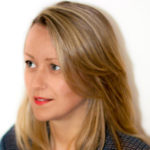Seventeen years ago, I moved countries for the 10th time. I enrolled into a master’s program in my home country, the U.K., to pin myself down into some vague notion of long-term stability. As the end of the one-year program drew near, I was planning another move, another country, another field of brighter, greener grass to graze from. So much for long-term. I wanted to stay somewhere, but I just couldn’t do it.
During the course of my master’s program—teaching English as a foreign language—I began to understand why I wasn’t achieving the stability I craved. As we looked at the motivation of language learners and those who achieved success versus those who remained stuck, I came across work on “possible selves” by psychologists Hazel Markus and Paula Nurius. Over the next few years, I developed their framework into a powerful exercise to discover my ideal self. I it use whenever I’m feeling stuck.
When I first tried it, the exercise made me realize that fear of boredom defined the jobs I would accept. It factored into my decision to enroll in the master’s program and my haste to escape the moment I handed in the dissertation. I was addicted to moving countries because I was afraid of being bored. Realizing that helped me stay longer in places—three or four years rather than six to 10 months—as I learned to understand the constant flight urge. Years later, the exercise helped me work out why I had writer’s block. I eventually finished the book I’d been writing for so long.
Want to know what drives your actions and what holds you back from making decisions or pursuing goals? This exercise for uncovering your ideal self is for you. We often strive to create achievable targets, or to avoid obvious pitfalls like procrastination. But if you truly understand why you want to achieve something, or what makes you spend two hours on social media instead of writing that novel or business plan, you’re far more likely to achieve success.
Warning: This one goes deep, so make sure you’re really ready to explore your subconscious.
The exercise to discover your ideal self
You’re going to visualize and describe, in writing, three different versions of yourself a year in the future: your ideal self, your probable self and your feared self. From these, you can get an overall sense of the undercurrents shaping your life. If you want to explore even further, you can analyze the themes and patterns that emerge in your writing to make plans for the future.
First, choose a time and place when you’re not going to be interrupted or distracted. You’ll need at least an hour for the initial writing, though you could split it into three separate sessions. The analysis stage can be done later. In fact, it might even be beneficial to return to what you’ve written with a fresh eye.
Now, start writing. Don’t let anyone else read it, or you won’t allow yourself the freedom to write honestly. Write for a minimum of 20 minutes under each heading, with no maximum time limit. Allow the words to flow. Don’t go back and edit and don’t plan what you’re going to say.
Ideal self
Under the heading “My Ideal Self,” describe an imaginary scene with you in it, unfettered by reality. What are you doing? Where are you? Who else is there? Include as many tiny details as you want, such as what you’re wearing or what sounds are in the background. This dream-you can be anything, but it doesn’t have to be extreme. Not everyone wants to own a tropical island after winning the lottery. What do you really want for yourself a year from now?
Probate self
Then repeat the free writing under the heading “My Probable Self.” This time, let reality intervene and describe a scene with you in it that is likely to occur. Maybe it looks much like today, maybe things have changed in a year. What do you expect for yourself a year from now?
Feared self
Finally, and this one can be a lot scarier, write about “My Feared Self.” This is a scene where you’re living your worst nightmares as reality. Our fears aren’t always rational, so don’t limit yourself only to what’s likely to befall you. What are you most afraid of becoming a year from now?
Time to analyze
For some people, just doing the free writing is revealing enough. But if you want to look for patterns and build life-changing strategies, the next stage can be done relatively quickly.
Highlight themes and assign them a color. For example, relationships in yellow, money in blue, work in green. Or you can further break down categories. For example, money can be divided into debt and savings. Let the themes emerge from the text itself, rather than creating a list and applying the categories. Color-code every sentence of all three scenarios. This was how I came to see that avoiding boredom had been driving most of my decisions, from career to location, relationships and weight fluctuations. It was a recurring theme throughout all three possible selves.
After that, I recognized when I was motivated by fear of staying in the same place or doing the same thing. I resisted the urge to uproot myself after 10 months in a new country to take a working holiday visa on the other side of the world. I stayed put for another two years. Staying opened up more opportunities for me than if I had begun again in a new place, and it led to the writing career I had never had the mental space to realize I wanted to pursue.
Strategies for success
Now that you know what’s driving you and what’s holding you back, you can put strategies in place for moving forward, toward your ideal self. That might mean—like for me—simply recognizing where decisions are really coming from and choosing differently, or creating detailed steps to overcome fears and make things happen.
What’s stopping you from achieving goals is likely to be more complex than it first appears. But one thing is sure: Your possible selves are as real as you are, and knowing who they are and how they influence you is a powerful base upon which to build success.
This article was published in June 2017 and has been updated. Photo by Dusan Petkovic/Shutterstock




